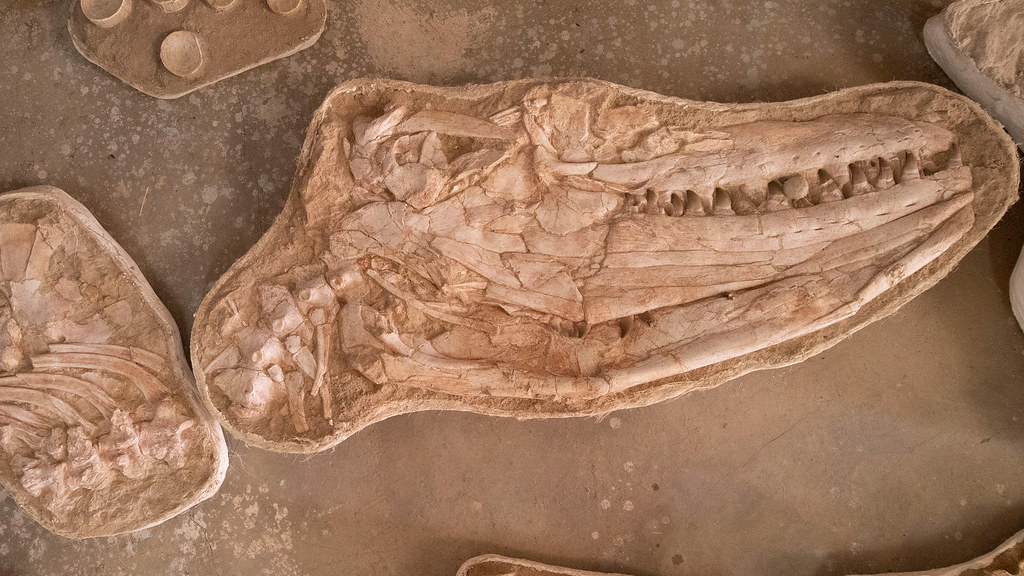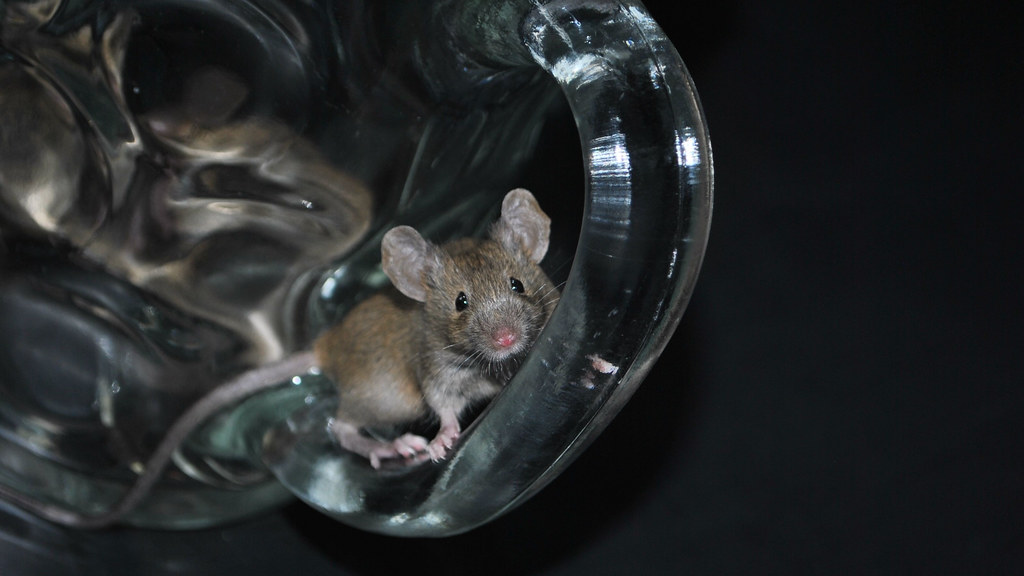巨大なキラーモササウルスの化石が発見され、その獲物の化石も発見されました。 Fossils of a giant killer mosasaur have been discovered, along with the fossilised remains of its prey.
2022-08-24 バース大学

Thalassotitan atrox grew up to 12 metres (40 feet) and was at the top of the food chain.
新種のモササウルスはThalassotitan atroxと名付けられ、他のすべての海生爬虫類を捕食するように進化したのである。
タラソティタンは、1.4メートル(5フィート)の巨大な頭蓋骨を持ち、全長は30フィート(9メートル)近くまで成長し、シャチの大きさに匹敵する。ほとんどのモササウルスは魚を捕らえるために長い顎と細い歯を持っていたが、タラソティタンは短くて広いマズルとシャチのような巨大で円錐形の歯を持っていた。このため、巨大な獲物を捕らえ、引き裂くことができたのである。これらの適応は、タラソティタンが食物連鎖の頂点に位置する捕食者であったことを示唆している。
巨大なモササウルスには、他のモササウルスとの激しい戦闘で負った傷が残っており、顔やあごに戦いで負った傷がある。他のモササウルスにも同様の傷が見られるが、タラソティタンでは例外的にこれらの傷が多く、餌場や仲間をめぐる激しい戦いが頻繁に行われていたことが示唆された。
<関連情報>
- https://www.bath.ac.uk/announcements/scientists-discover-fossils-of-giant-sea-lizard-that-ruled-the-oceans-66-million-years-ago/
- https://www.sciencedirect.com/science/article/abs/pii/S0195667122001793?via%3Dihub
モロッコのリン鉱床上部マーストリヒチアンから出土した巨大捕食性モササウルス類(Squamata)Thalassotitan atrox Thalassotitan atrox, a giant predatory mosasaurid (Squamata) from the Upper Maastrichtian Phosphates of Morocco
Nicholas R.Longrich,Nour-EddineJalil,FatimaKhaldoune,Oussama KhadiriYazami,XabierPereda-Suberbiola,NathalieBardet
Cretaceous Research Available online :24 August 2022
DOI:https://doi.org/10.1016/j.cretres.2022.105315
A B S T R A C T
The Cretaceous-Paleogene (K-Pg) transition saw mass extinctions in terrestrial and marine ecosystems. Terrestrial vertebrate diversity patterns across the K-Pg boundary have seen extensive study, but less is known about marine vertebrates. We describe a new mosasaurid from the latest Maastrichtian phosphatic beds of Morocco, showing how mosasaurids evolved to become apex predators in the latest Cretaceous. Thalassotitan atrox n. gen. et sp., from the Oulad Abdoun Basin of Khouribga Province, Morocco is characterized by large size, a broad skull, massive jaws, and reduced cranial kinesis, suggesting it was highly adapted for carnivory. Teeth resemble those of killer whales in their robust, conical shape, and show heavy wear and damage. Phylogenetic analysis recovers Thalassotitan as a close relative of Prognathodon currii and P. saturator within the Prognathodontini. Among the associated fauna, three genera of mosasaurids, elasmosaurid plesiosaur, chelonioid turtle, and enchodontid fish show acid damage, and could be prey ingested by mosasaurids, likely Thalassotitan. Thalassotitan shows mosasaurids evolved to fill the marine apex predator niche, a niche occupied by orcas and white sharks today. Mosasaurs continued to diversify and fill new niches until their extinction at the end of the Cretaceous.


